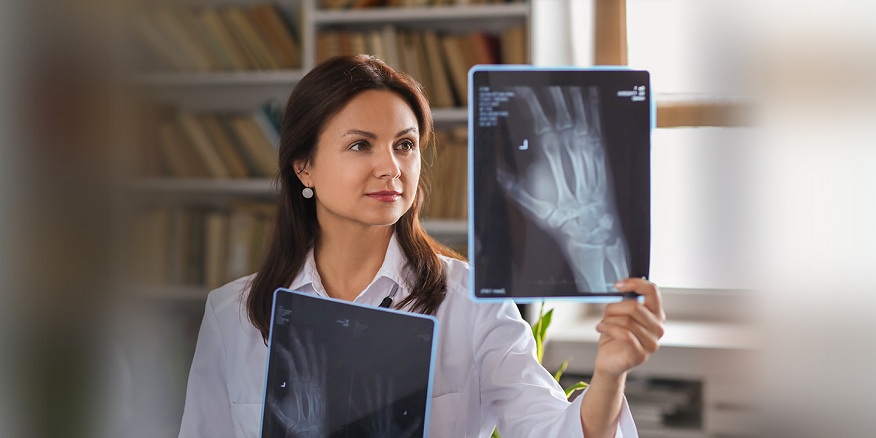 Posted On
Posted On
Exploring the Pinnacle of Medical Imaging: Unveiling the Best Medical Imaging Providers for Accurate Diagnosis
 Posted On
Posted On
Introduction
In the rapidly evolving landscape of healthcare, medical imaging plays a pivotal role in diagnosis and treatment planning. As technology continues to advance, the demand for high-quality medical imaging services is on the rise. Delve into the world of best medical imaging providers, exploring the best in the field that are at the forefront of delivering precise and reliable diagnostic solutions.
Historical Perspective: A Journey through Time
Medical imaging has come a long way since the discovery of X-rays by Wilhelm Roentgen in 1895. From the rudimentary images produced in the early days to the cutting-edge technologies available today, the evolution of medical imaging has been nothing short of revolutionary.
Emergence of Advanced Modalities
Over the years, various imaging modalities have been developed, each serving a unique purpose in diagnosing different medical conditions. Magnetic Resonance Imaging (MRI), Computed Tomography (CT), Positron Emission Tomography (PET), and ultrasound are among the advanced modalities that have transformed the field of medical imaging.
Precision in Diagnosis: The Crux of Medical Imaging
Accurate medical diagnosis is the cornerstone of effective healthcare. Medical imaging not only aids in identifying diseases but also plays a crucial role in monitoring treatment progress and guiding interventions. The precision offered by advanced imaging technologies significantly enhances the ability of healthcare professionals to make informed decisions.
The Intersection of Technology and Medicine
Technological advancements have led to the development of imaging equipment with higher resolution, faster processing speeds, and improved diagnostic capabilities. Artificial intelligence (AI) is also making its mark in medical imaging, providing automated analysis and enhancing the efficiency of diagnostic processes.
Artificial Intelligence in Medical Imaging: A Game-Changer
The integration of artificial intelligence in medical imaging is revolutionizing the field. AI algorithms enhance image analysis, automate routine tasks, and provide valuable insights to healthcare professionals. This not only improves diagnostic accuracy but also streamlines workflow, allowing for more efficient patient care.
Advancements in 3D Printing
3D printing is making significant strides in the medical imaging realm. By converting medical imaging data into tangible, patient-specific models, 3D printing aids in surgical planning, medical education, and patient communication. This innovative approach is opening new possibilities in personalized medicine.
The Future of Medical Imaging: Toward Precision Medicine
The future of medical imaging holds promises of even greater precision and personalization. As technologies continue to evolve, medical imaging is expected to play a pivotal role in the era of precision medicine, tailoring diagnostics and treatments to individual patient needs. As medical imaging technologies advance, challenges related to regulatory compliance and ethical considerations emerge. Striking a balance between innovation and ensuring patient safety remains a critical aspect of the evolving landscape of medical imaging.
Integration of Augmented Reality: Enhancing Surgical Navigation
Augmented Reality (AR) is gradually finding its way into the field of medical imaging, particularly in surgical navigation. By overlaying digital information onto a surgeon’s field of view, AR facilitates more precise and minimally invasive procedures. This not only improves surgical outcomes but also reduces recovery times for patients.
Telemedicine and Remote Imaging: Breaking Geographic Barriers
The advent of telemedicine has brought about a paradigm shift in healthcare delivery. Medical imaging, when combined with telemedicine, allows for remote consultations and diagnostics. This is particularly impactful in underserved areas where access to specialized healthcare services may be limited.
Fusion Imaging: Comprehensive Diagnostic Solutions
Fusion imaging, the amalgamation of multiple imaging modalities, provides a more comprehensive view of the patient’s anatomy. Combining, for example, PET and CT scans, or MRI and ultrasound, allows healthcare professionals to correlate information and obtain a more accurate diagnosis.
Patient-Friendly Imaging: Reducing Radiation Doses
With a focus on patient safety, there is a continuous effort to reduce radiation doses in imaging procedures. Innovations in technology, such as iterative reconstruction algorithms and dose monitoring systems, aim to maintain diagnostic quality while minimizing the potential risks associated with radiation exposure.
Collaborative Platforms for Data Sharing
In the era of interconnected healthcare systems, collaborative platforms for data sharing are gaining prominence. This facilitates seamless sharing of medical imaging data among healthcare providers, leading to more informed decisions and coordinated patient care.
The Rise of Point-of-Care Imaging
Point-of-care imaging is becoming increasingly important, especially in emergency and critical care settings. Portable and compact imaging devices allow healthcare professionals to obtain real-time diagnostic information at the patient’s bedside, accelerating decision-making processes and improving overall patient outcomes.
Addressing Mental Health: Neuroimaging and Beyond
The application of medical imaging extends beyond the physical realm, with neuroimaging playing a crucial role in understanding and diagnosing mental health disorders. Advances in functional MRI (fMRI) and positron emission tomography (PET) are contributing to a better understanding of the brain, paving the way for more targeted interventions in mental health.
Environmental Considerations: Green Imaging
As the healthcare industry strives to become more environmentally conscious, there is a growing focus on “green imaging.” This involves optimizing imaging processes to reduce energy consumption, exploring eco-friendly materials for equipment manufacturing, and adopting sustainable practices to minimize the environmental impact of medical imaging.
Patient Education and Empowerment Through Imaging
Medical imaging isn’t just about diagnosis; it’s also a powerful tool for patient education. Visual representations of medical conditions empower patients to better understand their health, participate in shared decision-making, and actively engage in their treatment plans.
Ethical Considerations in AI: Balancing Innovation and Privacy
The integration of AI in medical imaging raises important ethical considerations, particularly regarding patient privacy and data security. Striking a balance between harnessing the power of AI for improved diagnostics and protecting patient information is crucial for maintaining trust in healthcare systems.
Global Accessibility: Bridging the Imaging Divide
While advanced medical imaging is prevalent in developed regions, efforts are underway to bridge the imaging divide globally. Initiatives involving the donation of imaging equipment, training programs for healthcare professionals in underserved areas, and telemedicine collaborations contribute to making medical imaging more accessible on a global scale.
Continuous Learning and Training: Nurturing Expertise
Keeping pace with the rapid advancements in medical imaging requires ongoing training and education for healthcare professionals. Institutes, manufacturers, and healthcare organizations play a vital role in providing continuous learning opportunities to ensure that practitioners are well-versed in the latest technologies and methodologies.
Conclusion
In the ever-expanding realm of healthcare, the role of medical imaging providers cannot be overstated. Siemens Healthineers, General Electric Healthcare, Philips Healthcare, Canon Medical Systems, and Hologic are among the leaders in providing cutting-edge solutions that contribute to accurate and timely diagnosis. With the integration of artificial intelligence and other innovative technologies, the future of medical imaging looks poised to usher in an era of unprecedented precision and personalized patient care. As we navigate the challenges and embrace the opportunities, the pinnacle of medical imaging continues to shape the landscape of modern healthcare.








